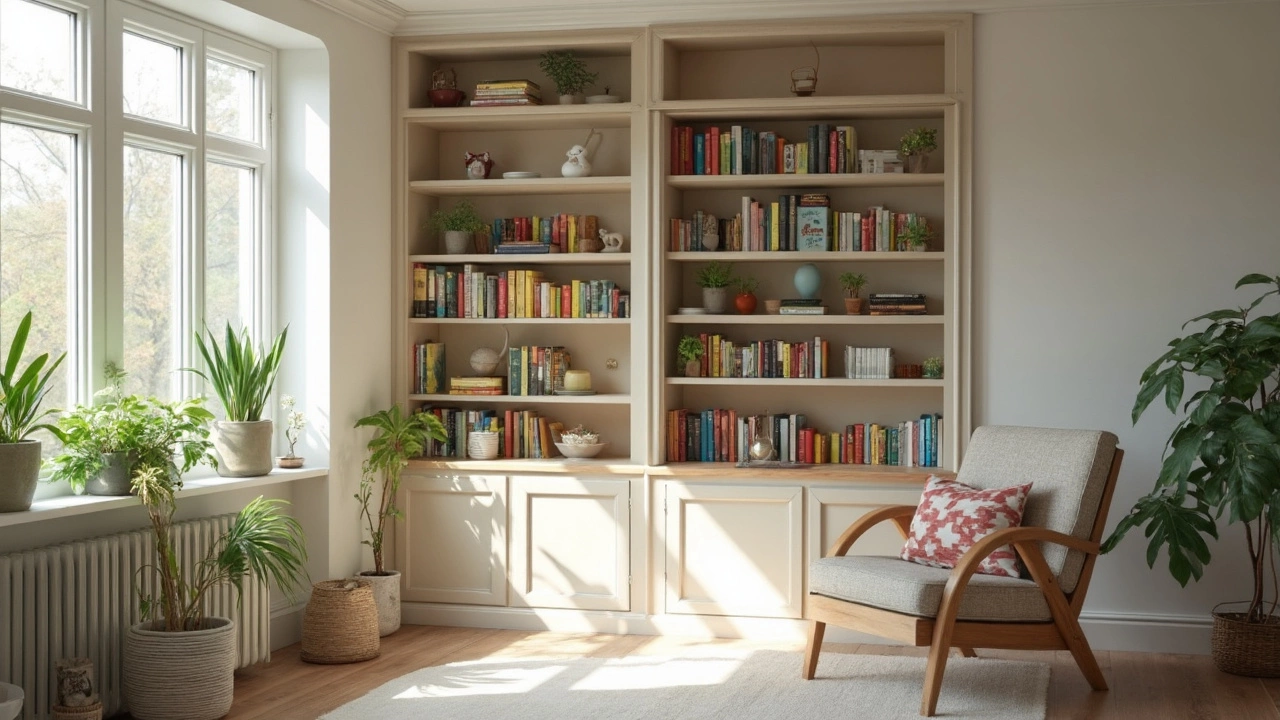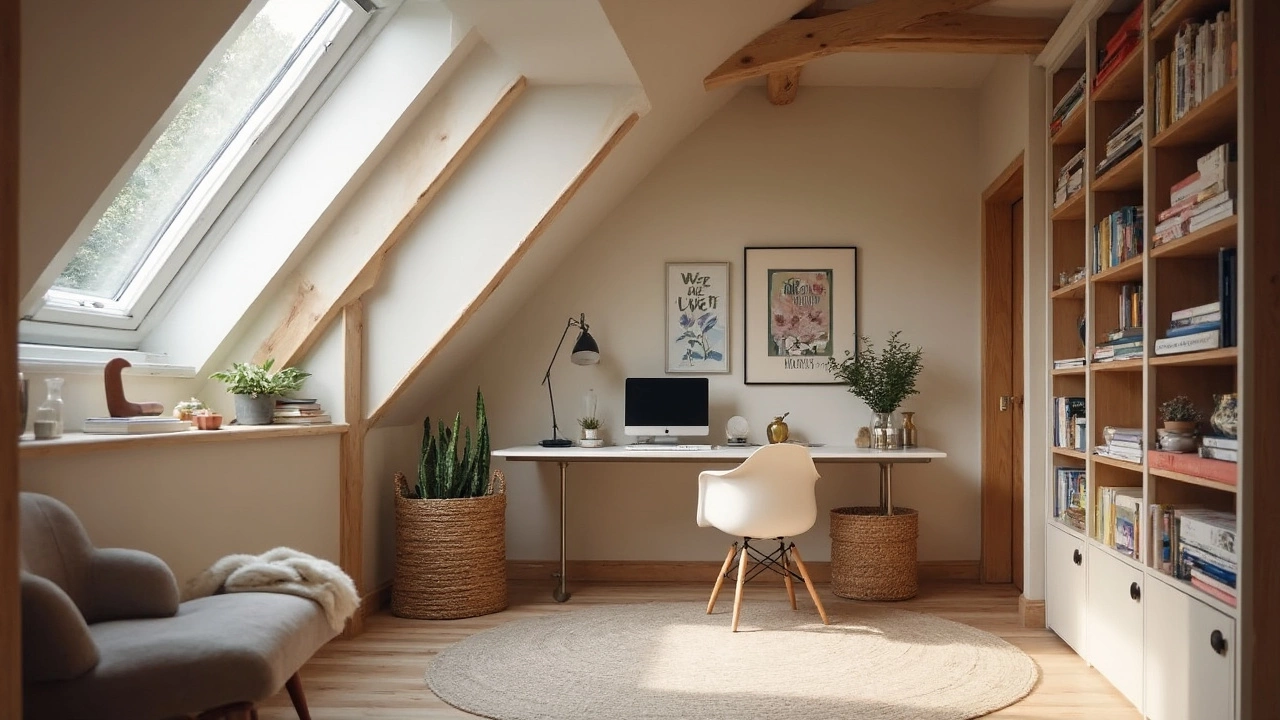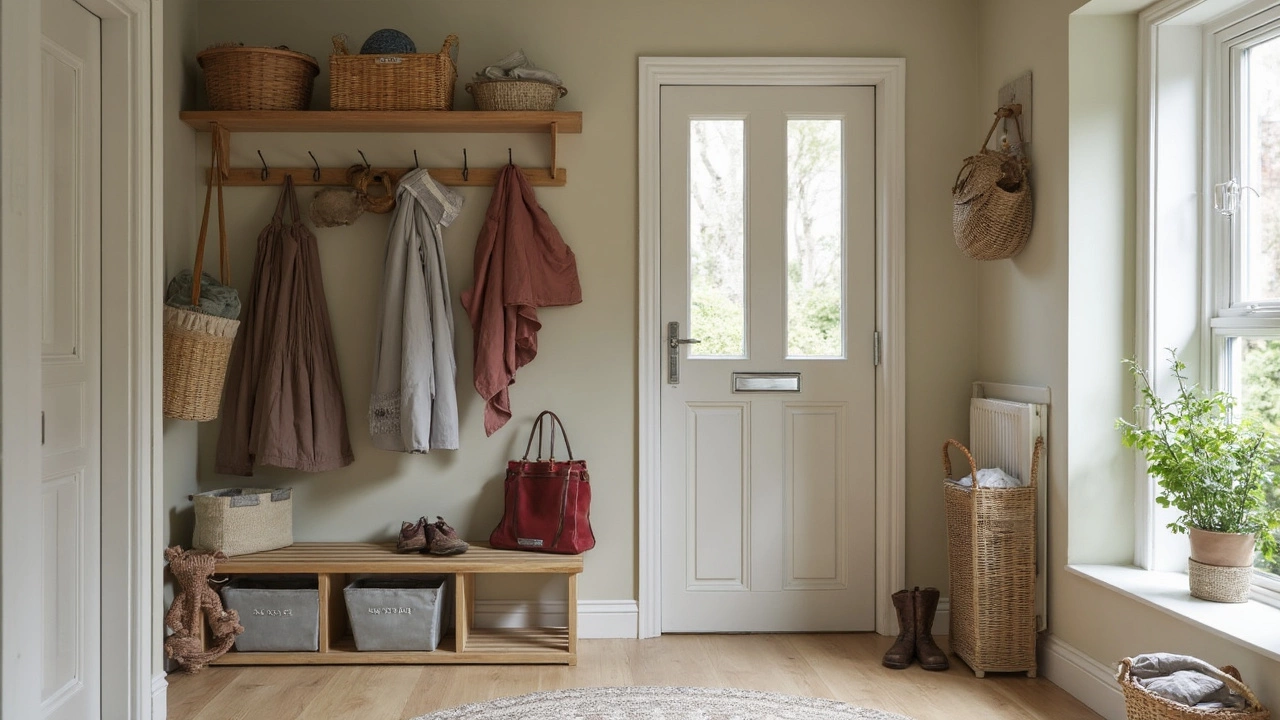Smart Ways to Maximize Unused Space in Your Home
 Jun, 26 2025
Jun, 26 2025
Ever wonder why some homes feel so put together while others just seem to have stuff everywhere? It isn’t just luck—it's about squeezing every drop of potential out of your space. The weirdest part: Even the tidiest houses are hiding all kinds of wasted nooks, corners, and surfaces. A report from the National Association of Home Builders said almost 30% of the average home's square footage goes underused. That’s wild, right? But it means nearly everyone has room to level up.
Spotting Unused Spaces Where You Least Expect
The first trick is learning to see your home with fresh eyes. Most folks focus so much on rooms they use every day—like the living room or kitchen—they don’t realize the goldmines lying in wait elsewhere. Have you looked under your stairs lately? Or glanced behind closet doors that open to, well, nothing? What about the top shelf in the laundry or those awkward corners behind your couch? Each of these spots is real estate just begging for a makeover.
Let’s start with under-the-stairs space. Loads of people just toss a few cleaning supplies there and call it done, but you can do so much more. Consider turning it into a cozy reading nook with a squishy cushion and a lamp. I’ve seen people set up little desks, homeschool stations, even a dog’s bedroom in that triangle-shaped cave! If your stairs are close to the entry, a set of cubbies and hooks turns chaos into an organized shoe drop and coat rack.
Then you have closets and pantries, which almost never get used to their full potential. Those top shelves everyone ignores? Add some stackable plastic bins or wire baskets, and suddenly the space holds way more—especially for stuff you only need now and then, like party supplies or holiday lights. Some folks even remove closet doors to open up the space, giving tiny bedrooms or halls a less boxed-in feeling.
Hallways and corridors aren't just for walking through. You can run a skinny table along a long wall with drawers underneath, or use floating shelves to show off books or trophies. I've seen families mount pegs for backpacks so school stuff doesn't scatter all over the floor. Even if your hallway barely fits a side table, wall-mounted holders for mail, keys, or pet leashes can clear off entry chaos.
And don’t get me started on those odd-shaped corners—especially in older homes. A curved corner? Drop in a rounded bookshelf. A deep window ledge? Style it with plants or create a cushiony hangout you’ll actually want to use. Mirrored shelves in dark corners reflect light and make the space feel bigger and brighter, even before you add knickknacks.
Let’s not skip garages and basements, either. Nearly half of Americans say their garage is the most disorganized spot in their house (according to a 2024 storage trends poll). But ceiling-mounted bike racks, foldable workbenches, and wall-track systems for sports gear can transform your garage into a true bonus zone—not just a dumping ground.

Creative Ways to Transform Small and Awkward Areas
The real magic happens when you mix creativity with function. Ever seen a Murphy bed? That’s the iconic wall bed that folds up out of the way, instantly turning a spare room into either a guest suite or a home gym/office/whatever-you-want. And don’t think you have to be a handyman or drop thousands on custom carpentry. These days, flat-pack Murphy beds come with clear instructions, and a friend with a power screwdriver can help you set one up on a lazy Sunday.
Built-in shelves are another game-changer, especially for those weird nooks between windows or next to chimneys. Shelving slices up tall, skinny spaces so you can finally give all those oddly-sized objects—board games, cookbooks, favorite mugs—a real home. If you rent and can’t go wild with power tools, try tall bookcases anchored with anti-tip hardware; you get the look of built-ins without property management breathing down your neck.
How about under-bed space? It’s classic—everyone knows to shove stuff under there—but most people do it in a messy, barely-functional way. Sturdy rolling bins or shallow drawers make it easier: no dust bunnies, no forgotten boxes. Bonus points if you sort stuff by season—think sandals and shorts for summer, sweaters and boots for winter—so you’re never digging through piles.
Window seats are both charming and smart. Even a narrow alcove beneath a window can become a bench with a pop-off top lid for hidden toy or blanket storage. Have a sloped attic wall? A window-adjacent desk setup is ideal for homework, crafts, or home office time.
Tiny bathrooms and laundry nooks are classic offenders when it comes to wasted space. Over-the-toilet shelving, slim rolling carts beside washers, or hanging mesh bags can double or triple what you can store. Yes, there are “apartment hacks” all over the internet, but don’t overlook classic hardware store finds like wire shelves and stackable baskets. The point is to use vertical and horizontal space. A study by Houzz in 2023 said households with strong storage options in small rooms feel 50% less stressed by daily clutter. I’ll take those odds.
Speaking of vertical space—walls are often the most ignored part of a room, even though they’re probably the largest. Pegboards, modular shelf grids, magnetic knife racks, over-door racks, you name it: the options multiply fast. In the kitchen, a simple wall rail can hang utensils, mugs, even small pots. In a bedroom, floating bedside tables mean no more tripping over furniture at night. Art display hooks let kids change up their drawings, so your fridge stays clear.
Lastly, don’t forget about hidden spots in furniture you already own. Ottomans with storage, lift-up coffee tables, beds with drawers built-in—these pieces pull double duty without taking up a single extra inch. The rise of multifunctional furniture is real: designers in 2024 revealed that more than half their clients asked for some kind of furniture with hidden storage or convertible features.

Practical Tips to Maximize Every Inch—and Actually Keep It Tidy
Now, turning a space into usable square footage only works if stuff actually stays neat. Organizing isn’t a one-and-done deal, so here’s how to keep the dream alive, even after the novelty of new shelves or bins wears off.
The first rule is easy access: If it takes more than two moves to reach something, you’ll ditch the system fast. Store everyday things in open baskets or clear containers. Label everything—this isn’t just for kids, it helps adults too. Having a permanent “spot” for your laptop charger or winter gloves means fewer morning scrambles.
Rotation keeps clutter at bay, especially if you have limited space. Once a month, scan through what’s stashed away and ask: did I use this since last season? If not, consider donating or recycling (unless it’s one of those weird family keepsakes no one is allowed to touch—those get a pass). Some people keep a “maybe box” for items they’re on the fence about, storing it somewhere out of sight for six months as a trial run.
Don’t be afraid to try modular systems, which you can add to or reconfigure as your needs change. Today your hallway might work best with cubbies for shoes, but next year those could hold art supplies or pet gear without a big redesign. Brands now make adjustable shelving and stackable bins for literally every room shape.
Small-space living is all about habits, so make a weekly routine of putting things back where they belong. It takes less time than you think—seriously, five minutes here or there—and saves you from wrecking your weekend on big clean-ups. If kids live in your home, colorful bins or easy-pull drawers help them join in.
If you ever need inspiration, peek on social media for “#smallspaceliving” or “#skony” (it’s Swedish for sleek and clever). You’ll see real-life solutions from people with teensy balconies, underwater basements, or way-too-many hobbies. Don’t get overwhelmed—steal just one idea to try.
And don’t forget: keep it fun. Incorporate your own style—paint bins funky colors, frame those new shelves with LED strips, toss in a plant or two for good vibes. When your home works with you (not just for you), every part of your space not only looks good, it feels good to live in too. Now’s the time to claim those forgotten corners and finally make them your own.